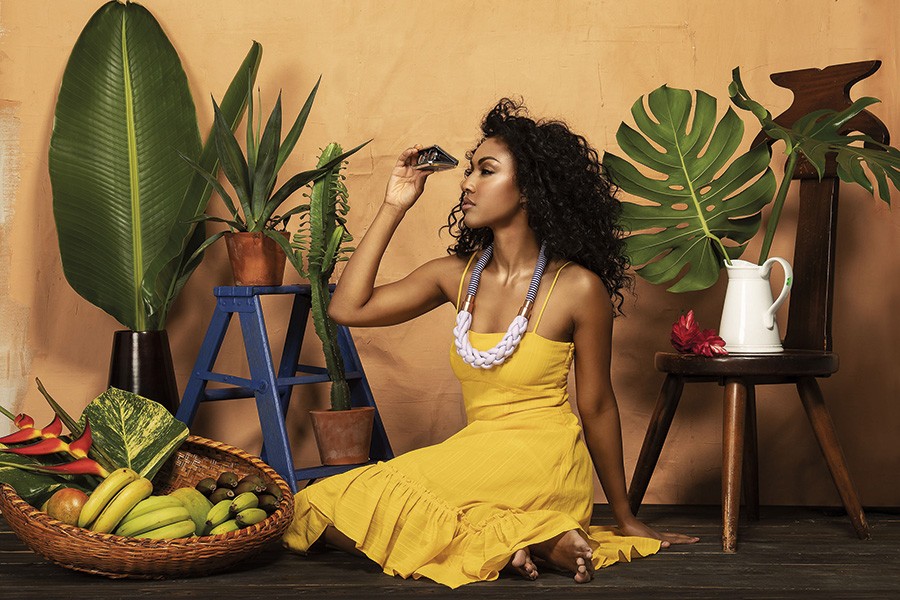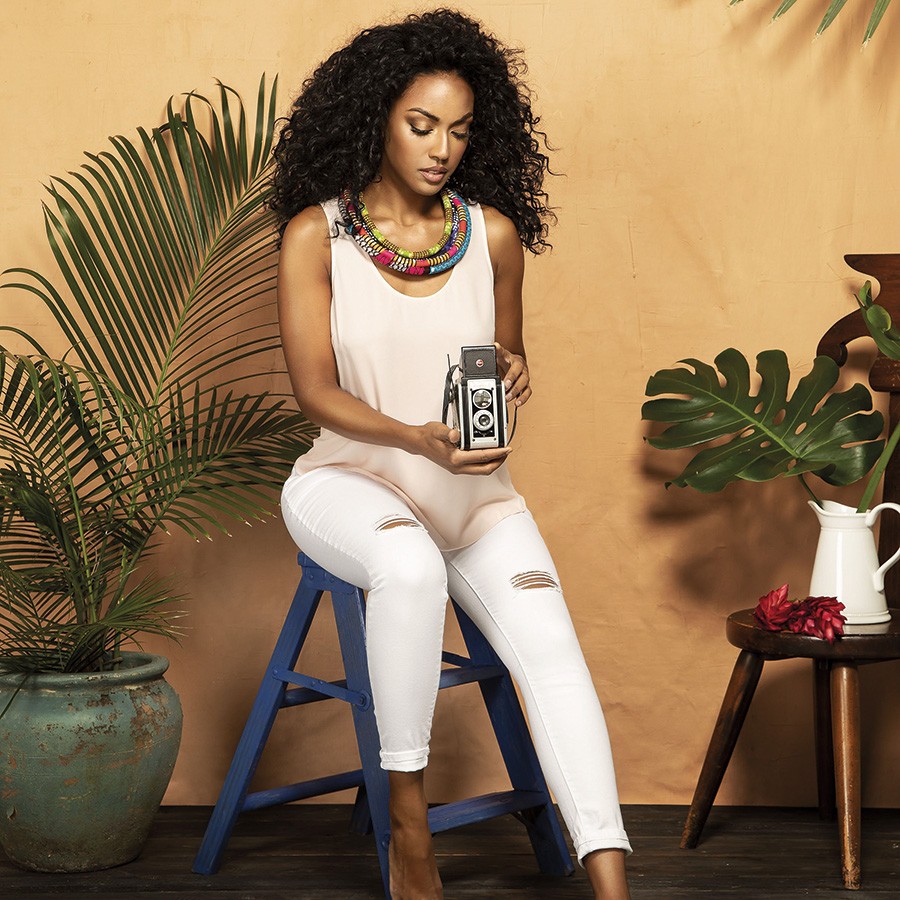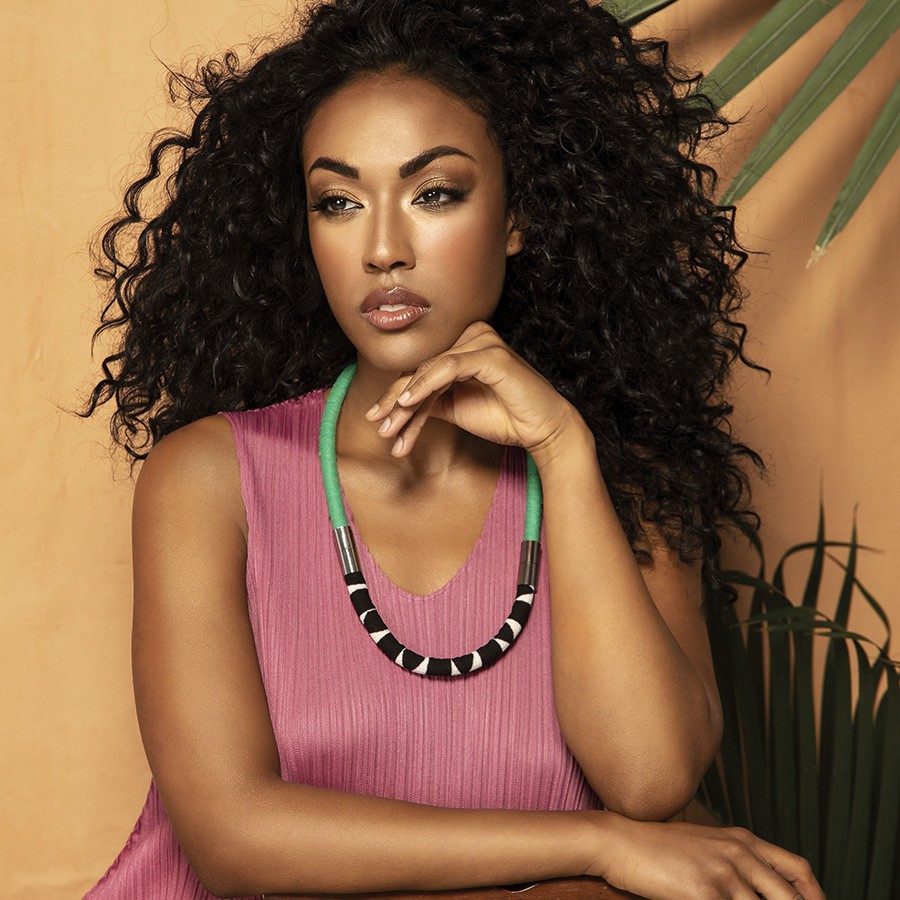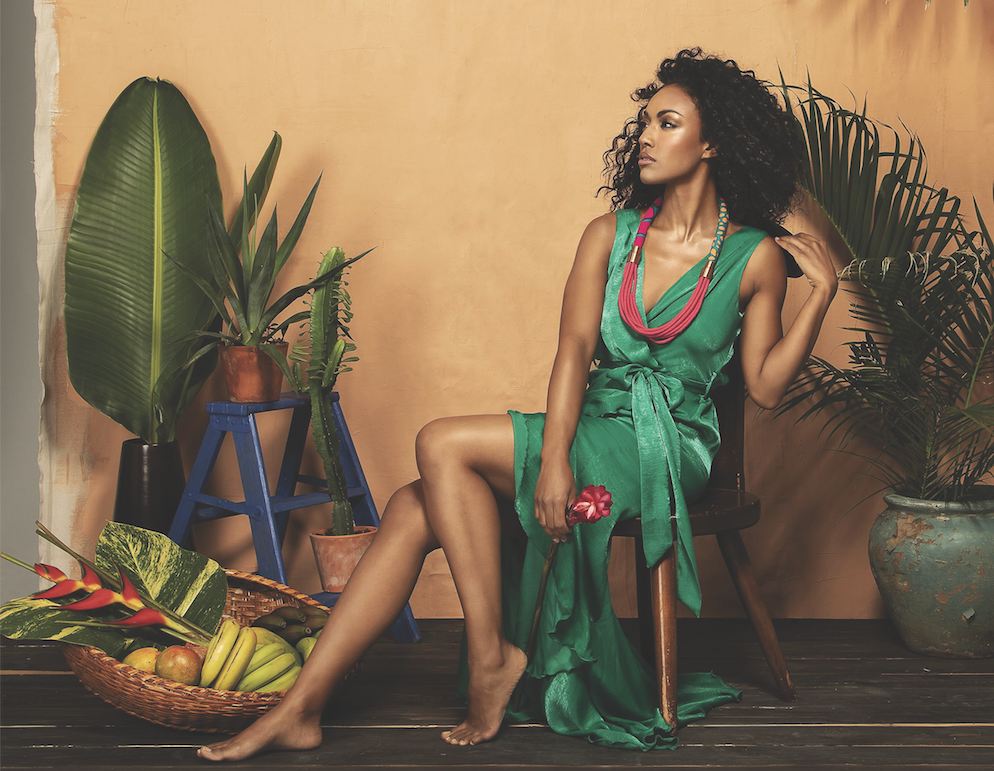Pretty certain Billy Ocean was singing about Elma Felix in his catchy reggae tune of Caribbean Queen. The St. Lucian native, public arts advocate and multipurpose designer stays busy, but always goes with the flow. After graduating from University of Miami’s School of Architecture and Urban Design, Elma went westbound, settling in Sarasota as a trained architect and urban designer—helping to shape the development and design of the region as the principal planner of Sarasota County’s Planning and Development Services. In her travels a few years ago, Elma found herself stricken by an overzealous airport traveler whose interaction lit a fire to accelerate her jewelry-making hobby into a professional side hustle. As Elma was walking through Miami International Airport wearing a braided neckpiece she had been experimenting with funky textiles and metals, someone passed her in stride and did a double take—prompting the beguiled stranger to ask where she had purchased it.
“When I told her that I made it, she asked for my website, which I didn’t have at the time. She really gave me a tongue lashing!” she quips. “When she offered to buy it right off me, I was in disbelief. At the time I couldn’t process what was happening, but I later realized I had something special on my hands.”

Elma continued to experiment with traditional braids, cords and twists—and every redesign got better and better. Ebijou was born. The name is a blend of Elma’s first initial and “bijou,” which translates to “jewelry” in Kwéyol—a fusion of French and Afrikaans spoken on the windward island of St. Lucia. Its handcrafted pieces of island funk bring the neck of the wearer vibrant esprit, rich texture and dimension. And while she channels her inner fashionista, it’s the urbanista within that contributes to initial design inspiration.
Geometric lines of street corners, on buildings, books, colorways in nature, photographs, magazines—Elma’s constantly looking, testing and experimenting. Still, she hasn’t forgotten her roots and St. Lucian heritage. To the imaginative onlooker, Ebijou’s larger-than-life necklaces are emblematic of the dramatically tapered mountains, volcanic beaches, underlying coral reefs and powerful waterfalls pounding in the rainforest. As bold and beautiful as the Pitons, each piece is bound to make a bold statement whether dressed up or dressed down. Often paired with classic silhouettes, Elma enjoys her pieces’ versatility—rocking on top of a simple white tank, or paired with a fanciful floor-length gown. “When I’m running around, I’m casual in a pair of skinny jeans and T-shirt with the Ase. The next day, I’m in a Lois London silk dress at an event with the Ayel,” she says. “I love the visual interest each piece adds to every look.”

Even the custom magnetic clasps and toggles to secure the necklaces are engineered with style and embedded with the brand’s eye-catching eyelashed logo. Ebijou’s logo soon caught more eyes. Artisan markets and local art institution curators wanted a piece of the queen. Her line has since been featured at 73° Flea and in trunk shows at The Ringling Museum of Art. Additionally, a five-piece collection of wearable works of art are currently on display in the gift shop at Sarasota Art Museum (SAM). Having created a limited-edition capsule collection exclusively for SAM, Elma incorporated the museum’s signature fuchsia color and a graphic pattern in black, white and navy.
Natural textiles remain at the core of every piece she makes by hand, and Elma’s medium of choice. “There are so many ways to treat them to get the exact result you’re looking for,” she says. Absorbing Caribbean hues, intricate patterns and authentic Ankara wax prints, Elma describes each piece as “an outward expression of culture to the wearer.”

The diversity in color, weight, texture, stretch, prints and flaws fuse a cultural backstory that adds an unexpected layer of depth and history. Much like fashion designers, Elma resorts to the sewing machine for creative stitchwork. Although not completely unheard of in the jewelry world, it isn’t very common. But learning how to sew is what Elma believes to be her most important jewelry-making skill she’s learned so these raw components can be weaved into her necklaces.
“I grew up with my grandmother in St. Lucia. Every important conversation was had around her sewing machine,” she shares. “I remember the dim glow of the light on her face and the heavy churning from her Singer foot pedal. Sitting at my sewing machine reminds me of her and weaves her memory into every piece I make.” SRQ
Ebijou Wearable Art, ebijou.co, @ebijou.co, elma@ebijou.co

Visuals: Photography, Matthew Holler; Model, Jai Nunez; Hair/Makeup, Eri Vincent; Fashion Stylist, Pamela Jean









